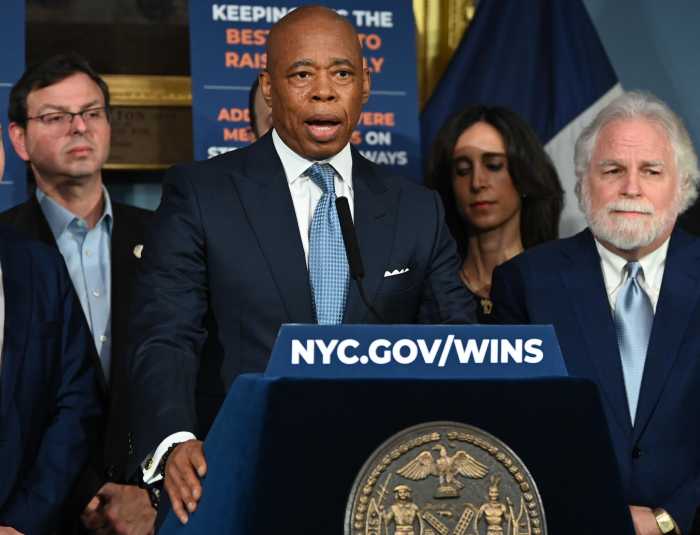Two weeks ago, we broke the story that rats were running wild in Tompkins Square Park, even invading the sandbox in the children’s playground — a playground only a year ago dubbed the city’s best.
Subsequent reports revealed a surprising reason for the park’s booming rodent population: The Parks Department hadn’t baited Tompkins Square with rat poison since April in order to protect the park’s red-tailed hawk, which potentially could be harmed, or even killed, by eating poisoned rats.
In the grossest rat-invasion videos seen since the KFC on Sixth Ave. in the Village was overrun by partying pests four years ago, TV news reports from Tompkins showed graphic footage of rats running rampant.
Clearly, this has been a black eye for Parks — even, for the city.
The problem was first brought to our attention by the Tompkins Square Park & Playgrounds Parents’ Association (TSP3A), whose members had had enough of rodents scampering near their toddlers. According to subsequent media reports, Parks said it planned to start baiting the park with rat poison again after the summer. But that didn’t sound good — summer is the park’s period of peak usage.
Anti-rat tactics Parks has been employing include stuffing the animals’ burrow entrances with wood chips and replacing trash baskets with smooth-sided trash drums harder for rats to climb into.
Mainly, Parks’ stated strategy is to eliminate waste food left in the park. However, with all the church and charitable feeding groups, and travelers and others leaving food around, that doesn’t sound like a winning strategy.
Now, in the latest development, The Villager has learned that Parks doesn’t plan to start baiting the park with poison again, ever — or at least not anytime in the foreseeable future. This is in keeping with the federal Migratory Bird Act, which protects red-tailed hawks.
“This will be a year-round issue,” a Parks source told us. “The trash collection and the cleanliness will have a more long-term effect that can best be evaluated in a couple of months. … Right now, we are focusing on the food source because we have ability to control it.”
We asked a local rat-control expert, Lloyd Garten, of Select Exterminating, on E. Sixth St., for his suggestions. Garten said laying stainless-steel mesh wiring under the park’s foliage would hinder rats’ ability to burrow. The mesh can be durable enough to withstand the pests, he said, but porous enough to allow water to pass through for plants. Garten added that a couple inches of soil could be placed atop the mesh, so plants could continue to flourish.
Thinking outside the box, we had an idea of our own — namely, box traps, similar to those used to catch mice in apartments.
In fact, Parks is exploring both these strategies.
“The meshing is being tried at a few locations with tree pits, but it limits our ability to create any planting beds,” the Parks source said. “A trap is something that we are considering and we are working out a design with the Department of Health.”
How about a crack team of feral cat ninja assassins? Seriously, at this point, we’re ready to try anything.
TSP3A isn’t satisfied with the “starvation” strategy. They say Parks needs a real anti-rat plan — and they haven’t seen that yet. And they’d like baiting to recommence in the fall or winter.
Meanwhile, TSP3A has received a free shipment of 5,000 mint-flavored garbage bags from the locally based Mint-X Corporation. It seems rats hate mint. The group will give Parks the bags to use in Tompkins.
Just focusing on the rats’ food supply won’t be enough to control these resourceful pests. TSP3A is right — a better plan is needed to rid the park of rats.





























